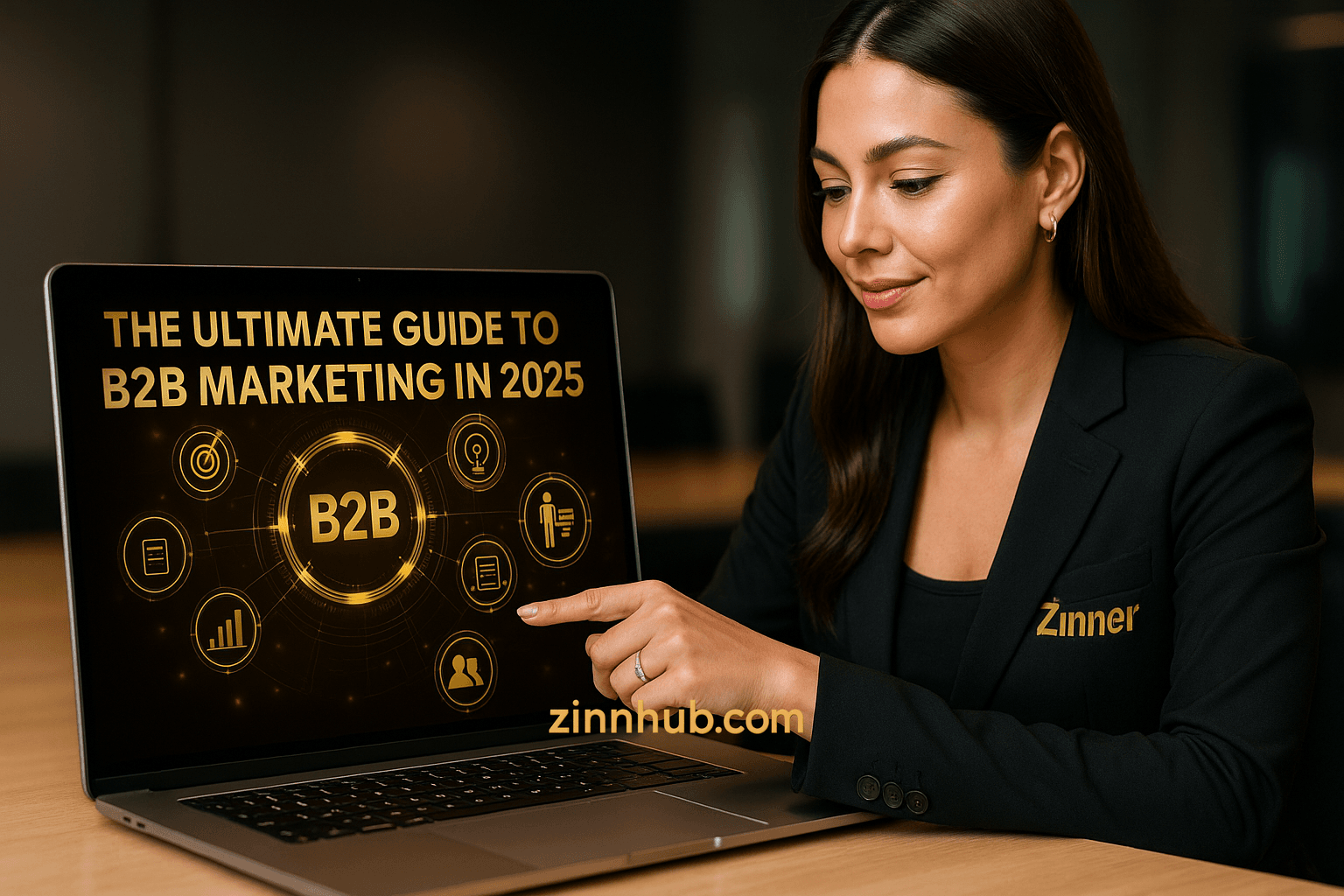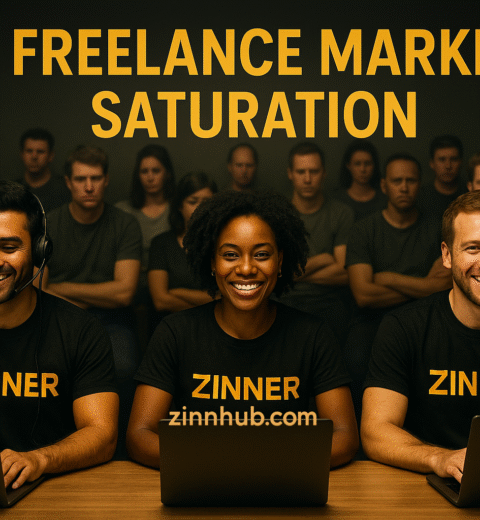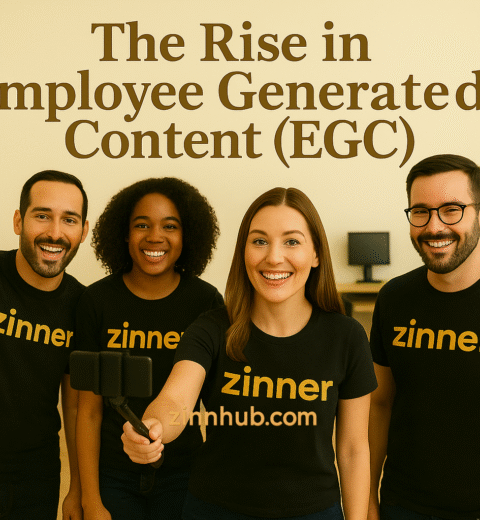Table of Contents
- What is B2B marketing? (Simple Definition)
- The B2B Buyer Journey (And Why Content Matters Early)
- Planning Your B2B Marketing: Five Practical Steps
- LinkedIn: The B2B Water Cooler
- Email Marketing: Still the Workhorse (With a Twist)
- Content Marketing: Authority is Everything
- Performance & Product Marketing
- Account-Based Marketing (ABM): Red-Carpet Approach
- Demos: Where Deals Are Made (or Lost)
- How to Communicate Value (Without the Hype)
- The Power of Data, Compliance & Experimentation
- Branding & Visual Identity
- Retention: Marketing Doesn’t Stop at “Closed Won”
- Marketing & Sales: The Alignment that Makes or Breaks You
- B2B Marketing Best Practices
- B2B Trends to Watch in 2025
- Real-World Example Case Studies
- Mini-FAQ: Quick Answers for B2B Marketers
- Final Word: B2B is Human
Let’s be honest: B2B marketing in 2025 isn’t for the faint-hearted. If you’re after quick wins or a viral TikTok moment, you’re in the wrong game. It’s more like running a marathon in work shoes, with a committee debating the route, and someone from procurement demanding another form be filled out.
I’ve had my fair share of “what on earth am I doing?” moments. (If you’ve ever waited six months for a proposal to crawl through procurement, you’ll know exactly what I mean.) But when the pieces finally line up—when you earn that trust and someone says “let’s do this”—there’s nothing quite like it.
What is B2B marketing? (Simple Definition)
B2B (business-to-business) marketing is any strategy or tactic a business uses to reach, influence, and sell to another business or organisation. You’re not just selling to one person—you’re selling to a whole team, each with their own opinions, tick-boxes, and KPIs.
B2B vs. B2C: What Makes B2B So Different?
Here’s how B2B and B2C marketing really differ:
B2B vs B2C Comparison
| B2C (Consumer) | B2B (Business) | |
|---|---|---|
| Audience | Individuals | Teams, departments, boards |
| Decision Time | Minutes to days | Weeks to months (sometimes years!) |
| Purchase Size | Low, impulse buys | High-value, strategic investments |
| Drivers | Emotion, desire, convenience | Logic, ROI, risk, group consensus |
| Content | Entertaining, short, snappy | Educational, in-depth, practical |
| Process | Quick funnel | Long, complex journey |
If B2C is a sprint, B2B is an ultra-marathon—with tea breaks, budget committees, and a compliance manager who’s always “on annual leave”.
I still remember working with a client who spent longer picking out a new CRM than I did buying my last car. In B2B, nobody wants to make the wrong choice—and everyone wants a say.
The B2B Buyer Journey (And Why Content Matters Early)
Here’s the cold, hard truth: B2B buyers do up to 57% of their journey before ever speaking to your sales team. They’re lurking on your site, reading reviews, comparing options, and even calling up old contacts before you get a foot in the door.
The classic B2B buyer journey:
- Awareness: “We’ve got a problem—what’s out there to fix it?”
What you need: SEO, value-packed blogs, guides, top-of-funnel content. - Consideration: “Let’s compare our options and dig into the details.”
What you need: Competitor comparisons, webinars, whitepapers, alternative pages. - Decision: “Which solution actually fits us, and how do we prove the value?”
What you need: ROI calculators, case studies, demos, FAQs, onboarding resources. - Retention & Advocacy: “Is this working—and would we recommend it?”
What you need: Nurture emails, advocacy programmes, rewards, surveys, useful updates.
Pro tip: If you’re not creating content for all four stages, you’re handing leads to your competitors on a silver platter.
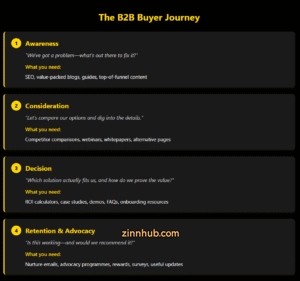
Planning Your B2B Marketing: Five Practical Steps
Feeling overwhelmed? Here’s how to map a winning plan (no jargon, promise):
- Know Your Market: Define your Total Addressable Market (TAM) and ideal customer profile. Who actually needs you—and can pay for it?
- Set Goals: Get specific. Is it brand awareness, demo bookings, pipeline growth, upsells? Set measurable KPIs for each campaign.
- Sharpen Your Value Proposition: What makes you different? Get crystal clear on what you offer that nobody else does.
- Map Your Outreach: Decide which channels matter (LinkedIn, email, events, direct mail), and tailor messages to each audience.
- Create Killer Content: Educational, practical, and genuinely useful at every stage—from blog posts to webinars and everything in between.
And yes, revisit and tweak as you go. No plan survives first contact with the market (or the finance director).
LinkedIn: The B2B Water Cooler
In B2B, LinkedIn isn’t just a platform—it’s the pub, the trade show, and the boardroom all rolled into one. Decision-makers expect to find you there. They also expect more than generic “proud to announce…” posts.
How to win on LinkedIn:
- Show the Humans: Encourage your execs, sales, and subject-matter experts to post real insights, stories, and even the odd mistake. People buy from people.
- Leverage Sales Navigator: Stalk (politely) your target accounts—see who’s moving roles, which companies are growing, and when to reach out.
- Mix Content Types: Share everything from video explainers to opinion pieces. LinkedIn videos get up to 5x more engagement than static posts.
- Try LinkedIn Ads: Expensive, but the targeting is unparalleled—perfect for reaching that elusive decision-maker.
Example: Slack’s candid video series (‘So Yeah, We Tried Slack’) mixed humour and honesty to build serious buzz among business buyers.
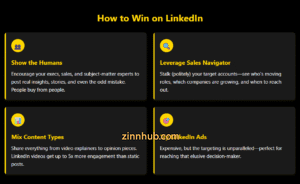
Email Marketing: Still the Workhorse (With a Twist)
Everyone’s inbox is overloaded, but email marketing remains the highest-ROI channel in B2B—if you do it right.
- Segment Ruthlessly: Don’t send the same message to the CFO and the IT manager. Customise content by job title, industry, and funnel stage. For one campaign, I sent detailed specs to IT leads and big-picture ROI stories to finance. The result? Demo bookings jumped by a third.
- Automate Intelligently: Set up drip campaigns and nurturing sequences (think HubSpot, Pardot, or even clever Mailchimp setups). Let your tools do the heavy lifting, but check for outdated messages! (I once found an old nurture sequence still promoting a webinar from 2019. That’s a lesson you only need to learn once.)
- Deliver Real Value: Send resources they’ll actually want to save or share—a practical checklist, a market stat, a new guide.
- Personalise, Don’t Parrot: A merge field with a name isn’t enough. Reference their company, pain point, or recent news.
And a word to the wise—always check for embarrassing typos before you hit send. I learnt that the hard way, too.
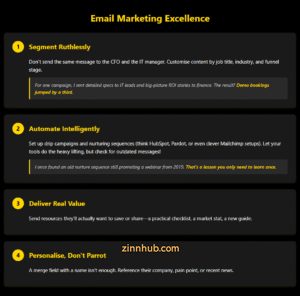
Content Marketing: Authority is Everything
B2B buyers crave trustworthy, useful content. The best B2B brands don’t just shout about features—they educate, guide, and sometimes entertain.
- Whitepapers and Industry Reports: In-depth, honest, and useful. Slack’s “So Yeah, We Tried Slack” video series and Salesforce’s gamified “Trailhead” platform both educate and build trust.
- Visual Content: Don’t bore buyers with a wall of text. Videos, infographics, and interactive guides keep people engaged and make your brand memorable.
- Case Studies: Prove your value with real client results, embedded into blog posts or landing pages.
- SEO: Every piece of content should help you show up where your buyers are searching.
Distribution counts: Don’t let your best work gather dust. I’ve had success breaking a whitepaper into a blog series, a set of LinkedIn posts, and even a quick video explainer. Stick the best bits in your email signature or share through an industry newsletter—wherever your buyers hang out. Repurpose guides into videos, checklists, and social posts for wider reach.
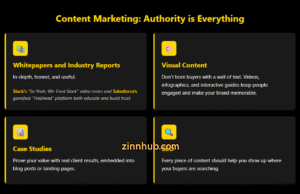
Performance & Product Marketing
- Performance marketing: Paid ads on Google, LinkedIn, and Facebook work when tracked properly. Set clear conversion goals and regularly check your ROI.
- Product marketing: Focus on education and customer enablement, not just launches. Think webinars, how-to guides, customer onboarding emails, and sales enablement collateral.
Example: Mailchimp’s “Did You Mean Mailchimp?” campaign used humour, video, and even novelty snacks to build brand buzz across platforms.
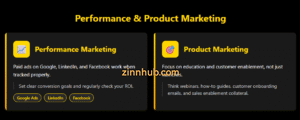
Account-Based Marketing (ABM): Red-Carpet Approach
Not all leads are equal. Sometimes, you need to roll out the red carpet for your dream accounts.
What works:
- Personalised landing pages
- Custom direct mail (yes, real post—stand out!)
- Invite-only exec dinners or small events
- Targeted LinkedIn ads and content sequences
- Tailored follow-up by sales and marketing as a united front
Remember: A great ABM campaign feels bespoke, not automated. Even a simple handwritten note can tip the scales.
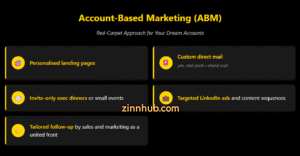
Demos: Where Deals Are Made (or Lost)
Never treat the demo as a tick-box exercise. This is where the magic—or the flop—happens.
- Customise every demo. Show you’ve done your homework. I always ask about their current workflow and tailor the demo on the fly.
- Let prospects poke around and ask awkward questions. If you don’t know the answer, be honest—then follow up quickly.
- Offer a pilot or proof of concept. For complex solutions, sometimes letting the client test drive seals the deal faster than any sales pitch.
And don’t be afraid of the silence after a tough question. Sometimes that’s where trust is built.
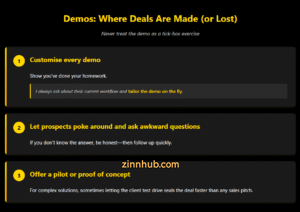
How to Communicate Value (Without the Hype)
In B2B, you’re often selling to someone who has to justify their decision to their boss—or even the board. Make it easy for them.
- Quantify everything you can: “We saved their team 20 hours a month” beats “it’s really efficient.”
- Spell out every cost—onboarding, support, the lot. No nasty surprises later.
- Make your champion look good: Give them the data, the slides, or the clever summary they need to shine in their next meeting. If you can help them get a pat on the back, you’ll have an advocate for life.
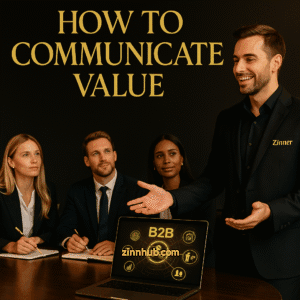
The Power of Data, Compliance & Experimentation
- Data is King: Quality, compliant data (GDPR if you’re in the UK/EU!) means you’re talking to the right people, with the right message.
- Intent Data: Platforms like Bombora or 6sense can reveal when companies are actively researching your solution—jump in while they’re “warm.”
- Experiment & Iterate: There’s no perfect campaign. Test, review, tweak, repeat. Try A/B testing subject lines, offers, even content types. Run small experiments, keep what works, bin what doesn’t.
At the risk of repeating myself: if you’re not measuring, you’re not learning. And if you’re not learning, you’re just guessing.
Branding & Visual Identity
B2B doesn’t mean boring. Build a clear brand persona—consistent voice, visuals, and values. Memorable brands win trust (and pipeline). Your brand isn’t just your logo—it’s how you show up in every email, on every call, and in every video.

Retention: Marketing Doesn’t Stop at “Closed Won”
The best B2B marketers know the job isn’t done at the sale. Keep customers close with:
- Useful onboarding content
- Advocacy programmes and referral rewards
- Regular, relevant updates and invites
- Surveys and feedback loops (and act on what you hear!)
Turning buyers into fans means repeat business and referrals—the holy grail in B2B.
Marketing & Sales: The Alignment that Makes or Breaks You
If your sales and marketing teams aren’t regularly sharing feedback, wins, and learnings, you’re leaving money on the table. The best results come when both teams swap stories, align messaging, and chase the same targets—not operate in silos. I’ve lost count of the times a marketer’s “hottest lead” turned out to be a student researching for a uni project—or, on the flip side, a lead sales wrote off was actually perfect, just early in their journey.
B2B Marketing Best Practices
Your Golden Rules
Start with a plan (and adjust as you go)
Invest in data quality and compliance
Create content for every stage
Focus on pain points, not just features
Embrace video, visuals, and interactive formats
Build a brand, not just a logo
Test and experiment constantly
Align sales and marketing, always
Prioritise retention and advocacy
B2B Trends to Watch in 2025
7 B2B Changes You Can’t Ignore
Real-World Example Case Studies
- Slack’s Video Campaigns: Using humour and office reality to build awareness and spark viral sharing.
- Mailchimp’s Multi-Channel Creativity: From playful ads to interactive campaigns (and even snacks!), Mailchimp built buzz and won brand recall.
- Salesforce Trailhead: Blended gamification and education to onboard and upskill users, turning customers into advocates.
Mini-FAQ: Quick Answers for B2B Marketers
What are the four types of B2B you can market to?
Producers, resellers, government, and institutions.
Which social media platform is best for B2B marketing?
LinkedIn is the go-to, but don’t ignore YouTube for explainers and Twitter/X for thought leadership.
Why is B2B marketing important?
It builds long-term revenue streams, creates partnerships, and powers the business ecosystem.
What’s the biggest mistake in B2B marketing?
Ignoring alignment with sales and failing to follow up after the contract is signed.
Final Word: B2B is Human
At the end of the day, even in the world of six-figure deals and multi-step committees, you’re still dealing with people. Stay curious. Be helpful. Listen more than you talk. Build trust. The rest will follow.
Don’t go it alone—there’s a specialist Zinner on Zinn Hub ready to help you grow your business. Need expert B2B help? Hire a proven freelancer on the Zinn Hub marketplace today.
Ready to swap ideas, pick up new tricks, or find your next great client? Join the conversation at Zinn Hub—where modern B2B marketing lives and breathes.

